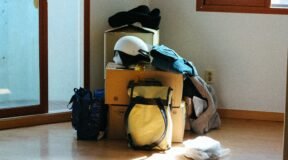Not only the timely preparation of the heating for the winter, but also the correct use of heat sources are worthwhile. You can avoid unnecessary problems in the winter and save too much money. Whether you’re burning in your home with a boiler, a heat pump, or electric heaters, you can always use a few lines to keep you cool and pay less in the winter than necessary.
Control of boiler, chimney and radiators before heating season
The ideal season is spring when the heating season ends, but you have the last chance in the autumn. Have your boiler, chimney and possibly repair radiators checked. As far as the chimney is concerned, it is even a requirement under the law. The expert should check the boiler and flue gas outlet.

The most important thing is for gas boilers, where it is necessary to focus on burner status, combustion chamber tightness and flue gas discharge. In the chimney, soot that reduces boiler output must be removed, but it can also cause fire. You can replace the obsolete boiler for a new one under “potty subsidies”.
Remove the dust from the radiators, inspect all joints and venting. The efficiency of the radiators can be increased by the reflective foil placed behind it, removing the long curtains and curtains and also the furniture that is in their immediate vicinity. Set the thermostats according to the heat demand in each room.
Purchase hotmelt on time
In particular, wood or pellet prices are subject to seasonal fluctuations. You can buy the cheapest in the spring and summer, or you can take action in the autumn. If you heat natural gas or electricity, you can optimize your billing using your supplier’s bid, or compare prices and, if necessary, make a change to your vendor. When heating wood, it is also important that the wood is sufficiently dried for at least two years. That’s why it’s good to follow the wood supply.
Ventilation and insulation
In winter it is necessary to wind up briefly and intensively. The error is ventilation by the ventilators, only cooling the walls and the more they have to melt. Fast intense ventilation passes through the room with fresh air, walls do not cool down and carbon dioxide is removed. Winter ventilation should not be longer than 5 minutes and it is good to repeat it for a day after two hours.
Seal every tiny slump that is the cause of heat loss. Heat leakage also prevents cheap self-adhesive insulating tapes in windows and insulating film on window panes. Often, heat is also leaked under the door, on the bottom of which you can stick door brushes.
These are all minor measures, but they can mean a great saving on heating costs.





